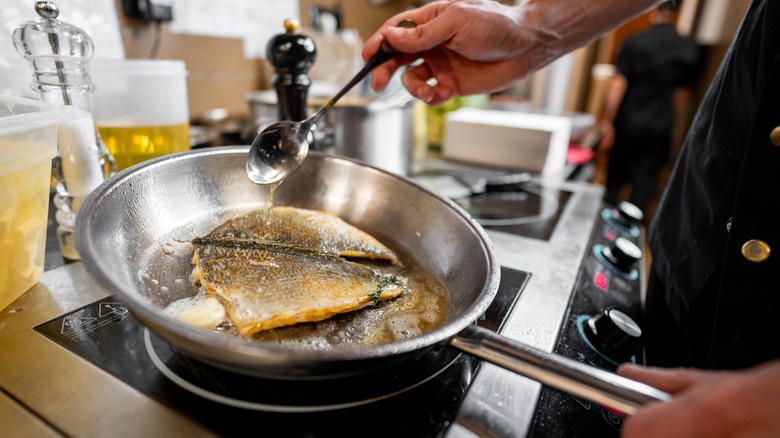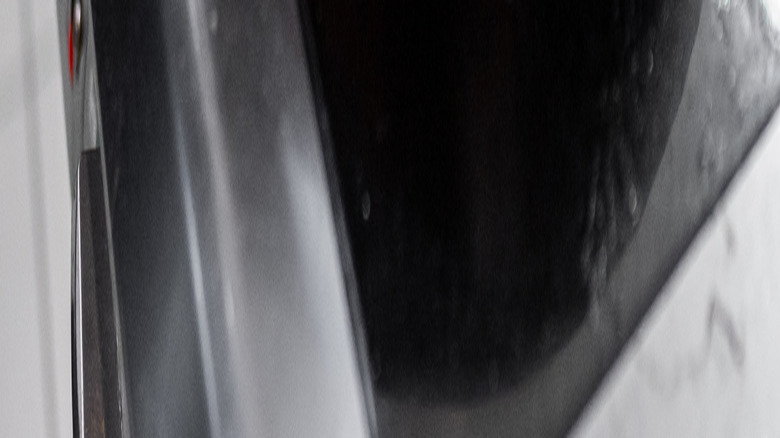How To Easily Turn A Stainless Steel Skillet Into Nonstick Pan
Selecting the best stovetop frying pan or skillet can feel tricky. Sometimes, you want the steak searing capabilities of a cast iron, but worry about particular acidic food interactions. Or perhaps you're after the minimal adhesion of a non-stick, but are gearing up for high heat cooking, thereby risking the release of toxins. While each pan type does come with its own pros and cons, rest assured there is some malleability, too.
For example, take note that you can turn a stainless steel skillet into a nonstick pan. All that's required is getting the steel pan extra hot before using it — you'll want to check the surface with water. Hit the pan with a few flecks of the liquid, and look for droplets that float around, rather than immediately evaporating. Once you've attained such a behavior, it's a sign that the pan behaves like a non-stick, and you can cook foods stress-free. Perhaps such a technique sounds too easy to be true, but it is backed by several scientific processes.
Intensely heat a stainless steel pan to turn it nonstick
Several physical processes coalesce to turn a stainless steel nonstick. The pan inherently comes with a porous structure due to the composition of steel. However once heated, the material increases in size, and all the microscopic indentations become smaller. As a result, food is less likely to become trapped in the material, and therefore won't be as sticky.
The heat also causes the Leidenfrost effect to take place, which is a physical reaction specifically in the liquid. Whenever the pan surface is hotter than the boiling temperature, a layer of vapor forms at the contact zone. This separates the liquid from the pan, and allows it to move around freely; hence the floating water droplets. As a result, foods with large quantities of liquid will be able to move around the pan more freely, furthering the nonstick effect.
So if you're finishing a sous vide bacon on a hot pan, then you won't have to worry as much with fat adhesion. And remember once you're done with the high-heat cooking, finish the pan with a delicious deglaze to really make the most of your skillet.

